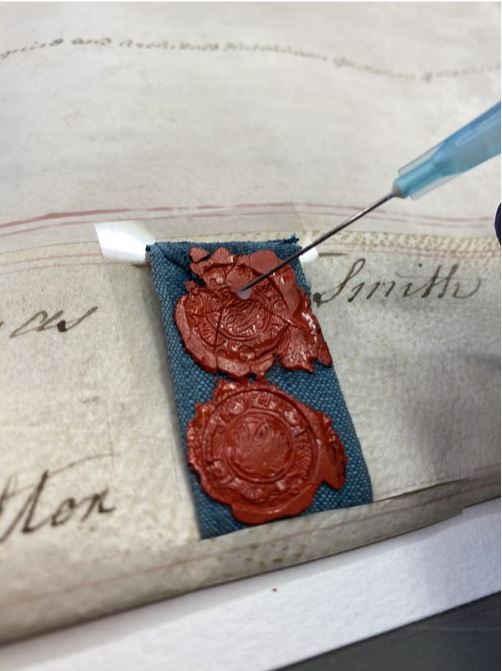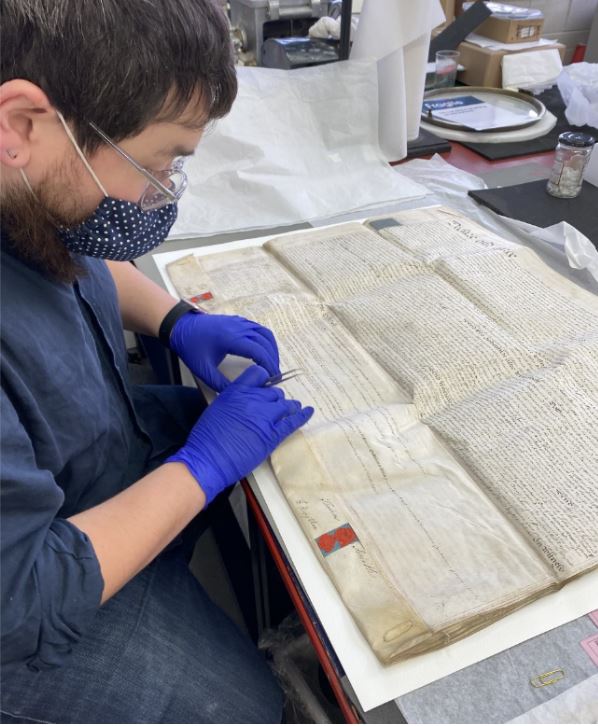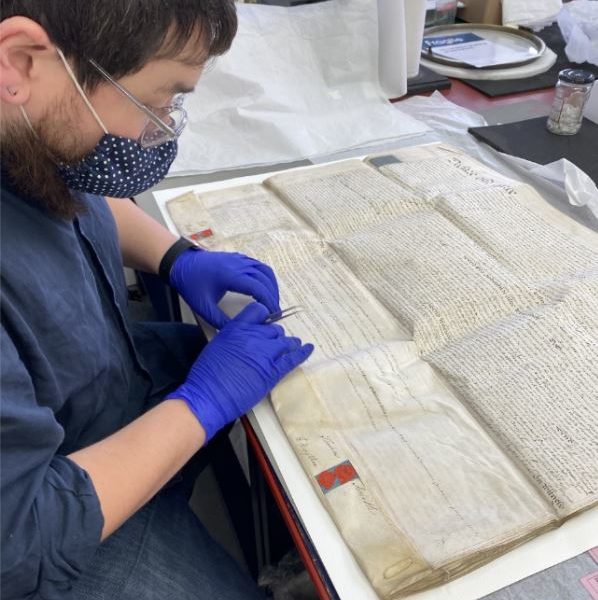During the lead up to the anniversary of the Stockton & Darlington Railway (S&DR), the National Railway Museum has been cataloguing, conserving and digitising the Leonard Raisbeck Archive. This collection documents Leonard Raisbeck’s background and the contribution that he made to the founding of the S&DR and the birth of the railway age.
He advocated that a proposed link between the South Durham coalfields, Stockton and Darlington should take the form of a railway and went on to be appointed joint solicitor of the S&DR. His family background afforded him the social standing to argue for the construction of the railway and among his personal papers there is a bound, signed and sealed vellum indenture that records the conveyance of land in County Durham from 1776. This document is one of the oldest items in the National Railway Museum’s archive collections.

The condition of the documents was fair. Many showed signs of deterioration commensurate with age and long-term archival storage. They consisted of loose pages and both partial and complete booklets bound with old string. There were two large vellum documents which both possessed a combination of vellum string bindings and wax-sealed fabric ties. These were severely creased and showed signs of aging and deterioration. The wax seals were brittle and, in some areas, cracked. There were multiple stamps and layers which had become detached and required re-adhesion.

The National Railway Museum’s photographer was tasked with the job of photographing and scanning these documents to produce high-quality images to be made available on Collections Online, the Science Museum’s Groups collections portal. The writing on many of the documents extended all the way to the central binding. Where paper and vellum had become rigid and brittle over time, pages could not be fully opened meaning some of the text was not accessible.
The Archives and Conservation teams engaged in an ethical discussion about how to move forward, considering whether a small amount of damage be done to allow digitisation and access to all the information held in the documents? In this instance the document might never need to be handled again. Alternatively, should the physical integrity of the document be prioritised, rendering digitisation impossible? In this instance, some of the information will not be accessible and the document may subsequently need to be handled repeatedly. It was decided that discreetly exerting a small amount of controlled damage to the documents to allow digitisation was the best option.

Consolidation of the wax seals was carried out using Lascaux 498HV. This is an acrylic adhesive and was chosen because of its strength, flexibility, transparency, and good working properties.
The vellum ties had become extremely rigid over time so undoing them was difficult. I decided to humidify them by applying a damp cotton swab to the ties and manipulating the knot gently with a dental probe and needle. To protect underlying pages from exposure to moisture I created a barrier using a section of Melinex which is a conservation-grade polyester film. Slowly but surely, the humidification made the ties more pliable and with time I was able to undo the knots.
There were three wax sealed fabric ties that had to be cut to allow full opening of the indenture. I used a scalpel to cut these ties in an area within the document so that this damage was not immediately obvious on viewing. I consolidated the cut edges with 1% Methyl cellulose in deionised water to stop the edges from fraying.

Assisting the Archives team with this project was a fantastic chance to gain some experience outside of my usual museum object conservation work. It was a unique opportunity to work with new materials, and research and deliver some new treatments. It was also a pleasure collaborating with Archives and Photography colleagues to help make the Leonard Raisbeck Archive accessible to future researchers, both online and in person.

I was responsible for transcribing some of the Raisbeck Indentures. I thought that they would be a large document but from the photos they appear to be at least A2, possibly even larger.
Peter Bainbridge